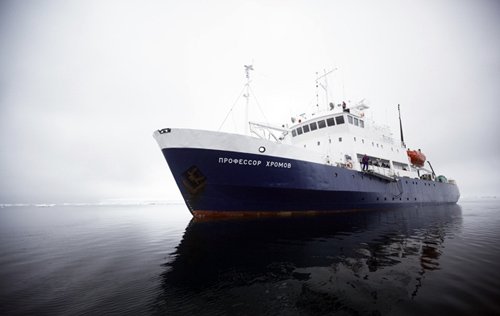Antarctica, the final frontier

AG designer, Mike Rossi, set sail on the Society expedition to Antarctica, the harshest area on the planet.
MY HOME FOR THE 26 days is the Spirit of Enderby, a 72-m-long Russian-registered, KM ice-class vessel with an ice-strengthened hull. Its smaller size and strength should allow us to visit parts of Antarctica that would be off limits to larger vessels. It is crewed by Russians, staffed by Kiwis and Aussies and has the capacity to carry 50 passengers. On board there are two dining rooms, a bar, library, lecture theatre and even a sauna. The ship also carries five inflatable zodiacs that will allow us to make shore landings on various subantarctic Islands and on the Antarctic continent itself.

Antarctica is the world’s fifth-largest continent – about double the size of Australia – covering an area of 14 million sq. km, 98 per cent of which is permanently covered by ice. It is on average the coldest, windiest and driest place on Earth, and one of the engines driving the planet’s climate. Even though Antarctica’s ice contains 75 per cent of the Earth’s water, it is officially a desert, receiving an average of only 200 mm of rain per year.
Most tourism to the continent is concentrated around the Antarctic Peninsula, its proximity to the South American continent making it the most accessible part. Our ship is headed towards the less-visited east Antarctic region, three full days of sailing from the closest landfall at Macquarie Island, or five days from Hobart, across the turbulent Southern Ocean.
It is a landscape dominated by majestic ice cliffs dramatically rising hundreds of feet out of the sea and glaciers fed by the abounding white icecap beyond. In summer, it is one of the first regions to break free of the winter pack ice, though there are only a couple of points that are accessible by boat, as Mawson discovered when the Australasian Antarctic Expedition of 1911 sailed almost a thousand kilometres of coastline looking for a suitable place to set up base.
It is a place where constantly changing weather and ice conditions can swiftly alter the best made plans. Our ship spends an entire evening negotiating large slabs of breaking pack ice to land us at Commonwealth Bay the next day – we make it only due to the ice navigation skills of our Russian captain. Further attempts to land at Port Martine and at the French base, Dumont D’Urville, over the next few days are foiled by thick pack ice that prevents us from getting anywhere near the coast.
It is a lesson in humility, taught by a frontier land that dictates the terms and conditions of human interaction. One cannot help but be filled with respect for this stunningly beautiful, fiercely hostile, immense and untamed wilderness.
RELATED STORIES




